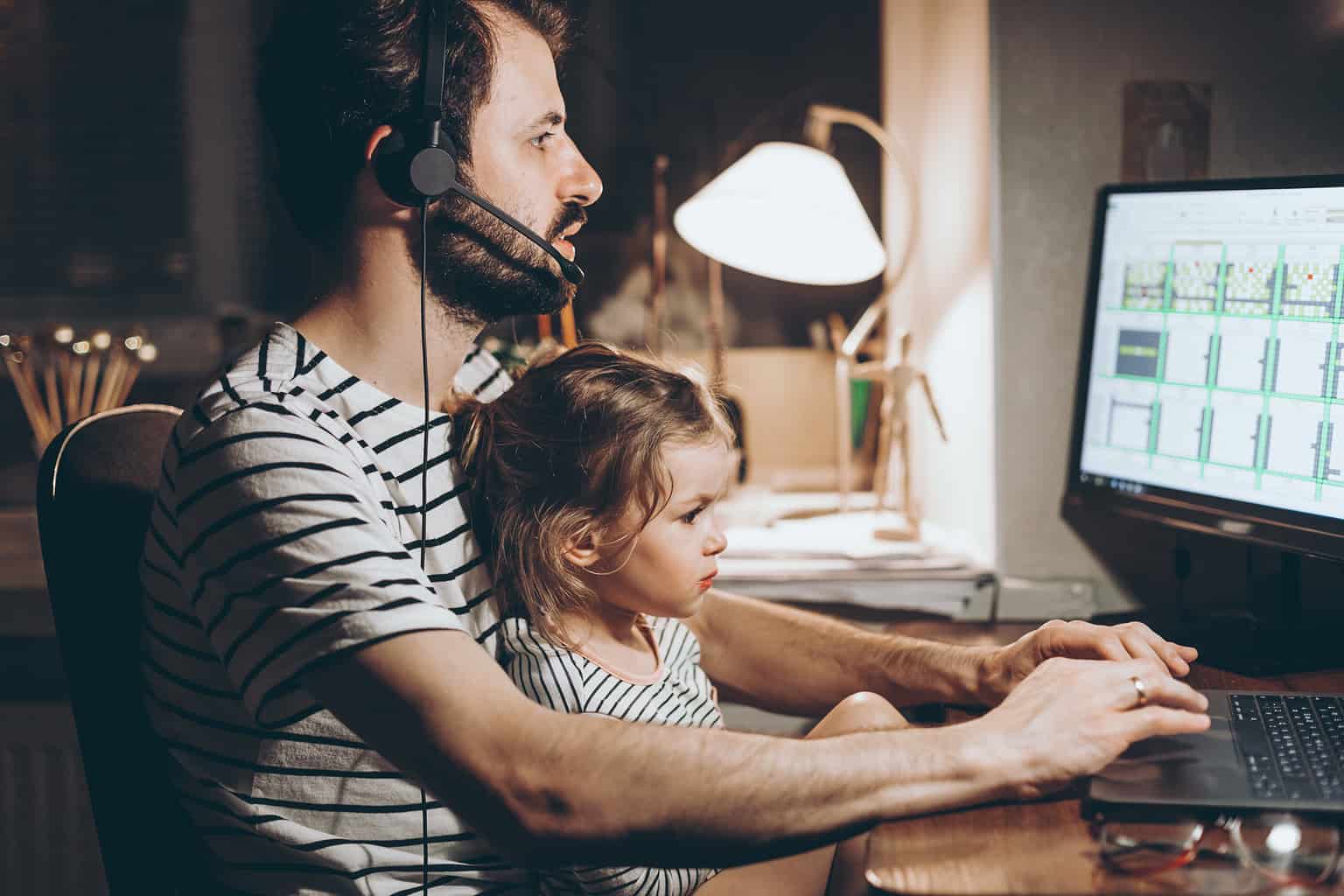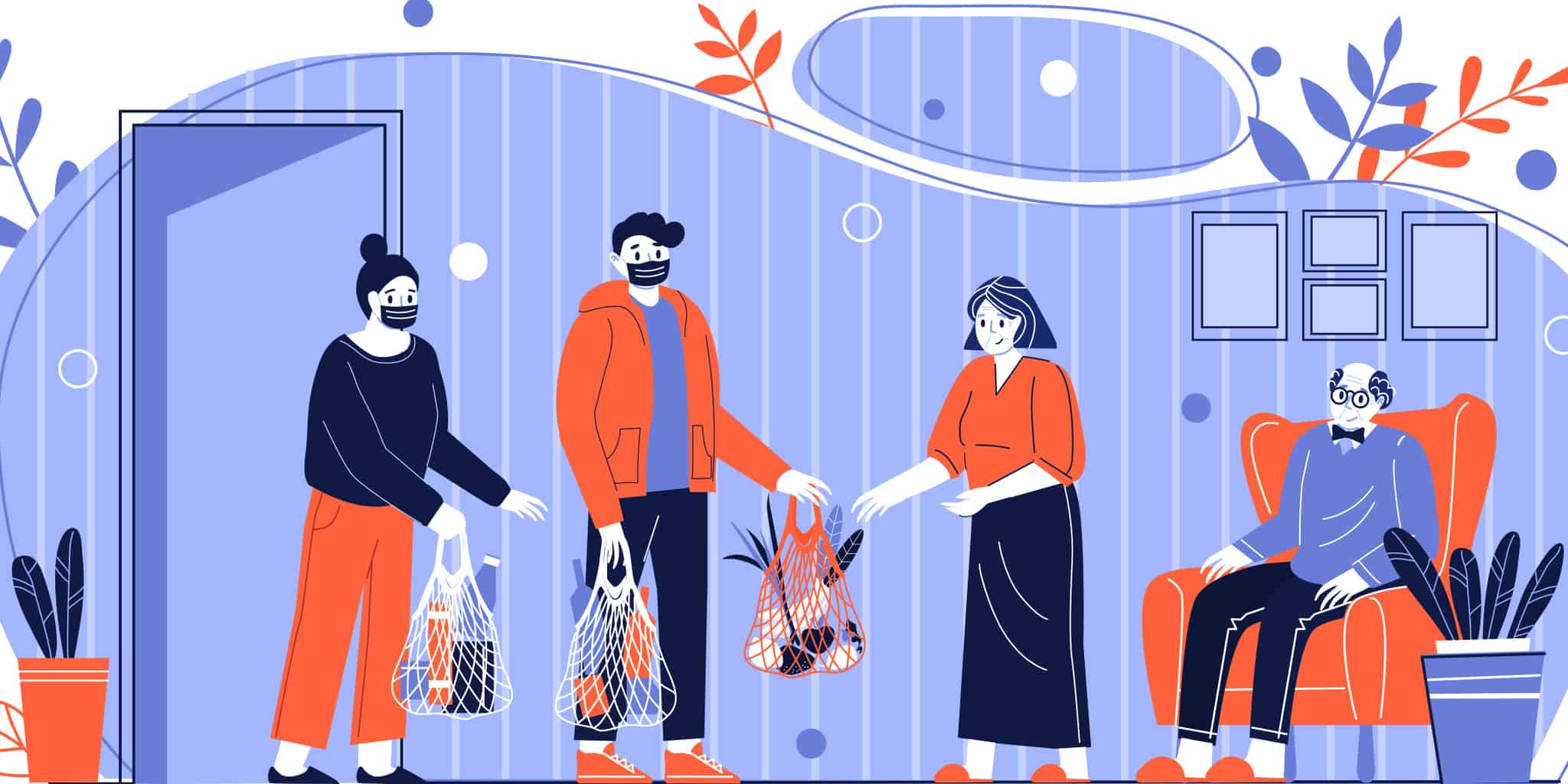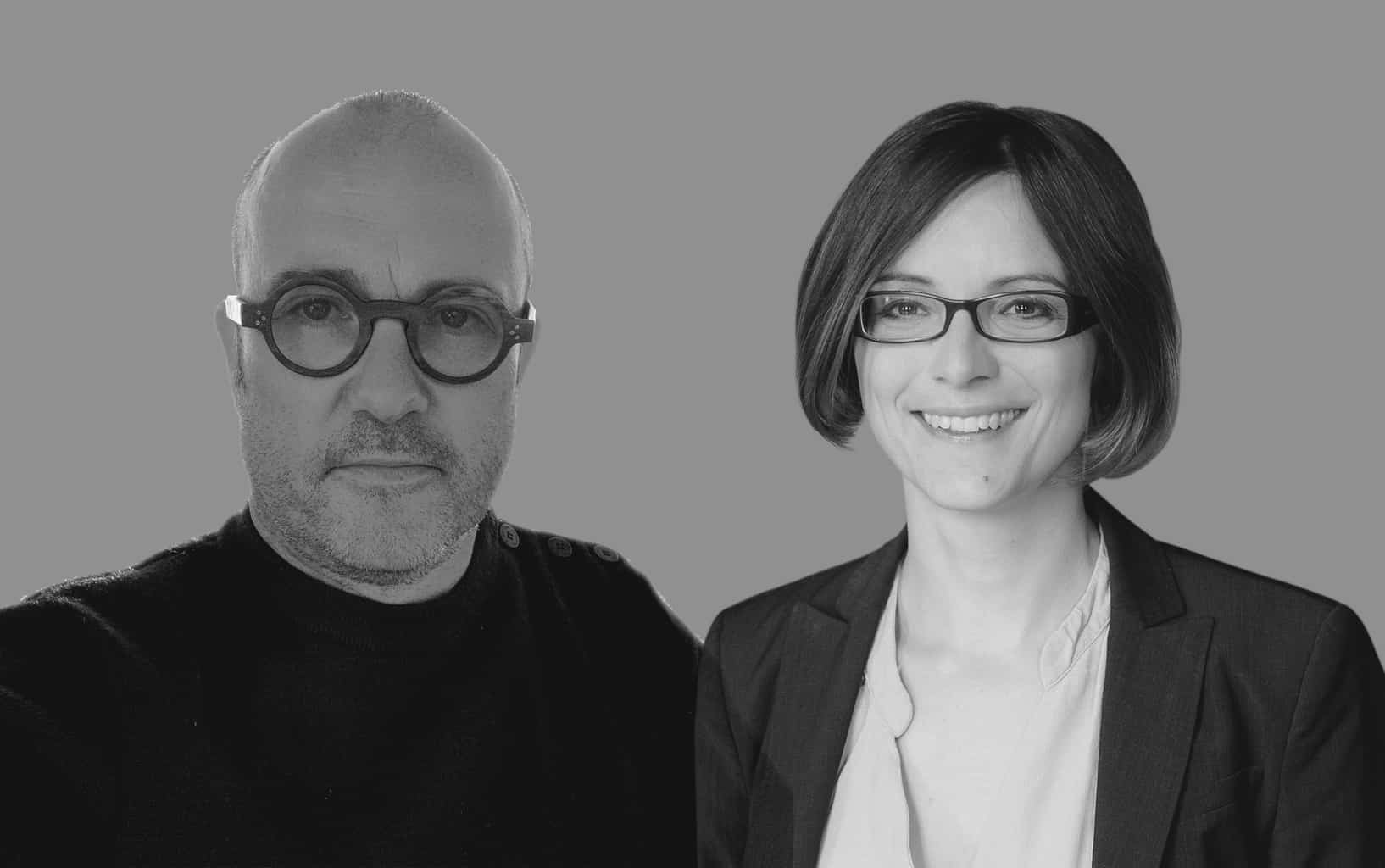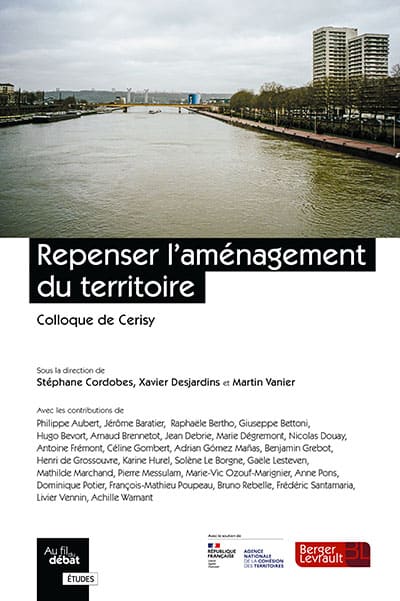
What impacts did the Covid-19 lockdown have?
“Only when the tide goes out do you discover who's been swimming naked”
‐ Warren Buffet
The Covid-19 pandemic, which forced more than half of the world’s population into lockdown, has bluntly revealed weaknesses in our society, which is subject to a globalised economic growth model, weak public services and an environmental crisis – the effects of which continue to be felt and the causes are still not being addressed efficiently.
But lockdown was not all bad news. Citizens, associations and local communities rolled up their sleeves and got to work making aprons and masks, distributing food and helping the vulnerable. Remote working turned out to be a powerful tool, for those who were unable to go to the office, whilst our “frontline heroes” exposed themselves daily to the possibility of catching the virus to keep supplies moving, and provide care and cleaning services. Their commitment was literally life-saving. “These are fully fledged territorialisation processes that are extremely interesting in terms of addressing the crisis, obviously, but also for building the future, if we can intensify the various dynamics”, explained Stéphane Cordobes – a research fellow at the Ecole urbaine de Lyon – in an interview with us. What reassuring news!
Edouard Bard, a professor at the Collège de France and a member of the Académie des sciences, sees the crisis caused by coronavirus as a “dress rehearsal, or a crash test, for human society”. In a column appearing on 25 April for the newspaper Le Monde, Bard stated that it “presages a fast-tracked increase in global warming that will occur in the next few decades”

The social impact of the Covid-19 crisis
THE COVID-19 CRISIS HAS EMPHASISED SOCIAL INEQUALITIES. THE DIGITAL DIVIDE IS WIDENING AT A TIME WHEN “REMOTE” IS ESSENTIAL.
The call to change, with statements such as “Change Now”, came true dramatically in mid-March. Our way of life was turned upside down overnight. The epidemic forced us to reconsider how we view time, space and those around us. Over the last few months the press has been repeatedly reporting on new ways of making social connections, either alone or as a family, new ways of working and new ways of consuming.
These changes are occurring at a time when social inequality has been accentuated during lockdown, even if displays of solidarity were sometimes able to alleviate these inequalities. Let’s look at some of the changes that are still impacting society.
ACCENTUATED SOCIAL INEQUALITY
On 19 March, ducks waddled along deserted Paris streets, deer roamed the Morbihan beaches and dolphins were seen in the ports of Venice. An astonishing calm reigned and people everywhere were able to hear bird song! According to data collected by Orange, 17% of Ile-de-France residents left the region on 15 and 16 March, with an additional 2 or 3% following not long after. For the 80% who stayed behind, the environment improved significantly. According to Airparif, a direct consequence of the restriction of movement was the best air quality that has ever been seen for the last 40 years.
Inside homes, however, families were not all enjoying the same quality of life. Whilst some families benefited from having a sound-proofed room each, terraces, gardens or balconies, others were living on top of each other, suffering with noisy neighbours and comparing themselves to prisoners who were now locked up “alone or in cells in pairs” as “10,000 prisoners were released in less than one month”, as reported by the newspaper Les Echos on 16 April. A article appearing in the newspaper Parisien with the headline “Five people and a newborn baby locked down together in 11 square metres” at the end of March touched readers and caused an outpouring of solidarity. Some Parisians living in two or three room flats and who had left Paris offered their apartments to the family – and other families who were in similar situations – for the duration of the lockdown.
We are also learning about the heavy price paid by our senior citizens during this Covid-19 epidemic and the extreme sense of loneliness that they face inside care homes. According to figures published on 26 April by the French public health authorities, 8,654 senior citizens have died in care homes. Calls by women and children, victims of domestic violence, doubled at the start of May. And the vulnerable were left more isolated than ever.
GOING REMOTE
The digital divide, an expression coined to refer to digital illiteracy and which affects 17% of the French population according to INSEE, is widening with the acceleration of digitalisation in society and “remote” activities (derived from the Greek word “tele”).
Homeschooling and remote working became essential in March with 8 million people across France working remotely at the start of May, according to the authorities. Whilst homeschooling appeals to only a small percentage of teachers and parents, working from home is seriously attractive to those who are able to so. A study carried out during lockdown by Malakoff Humanis, a group specialising in health and life insurance, found that 73% of those working remotely would like to continue to do so. 32% of these workers would to do so on a regular basis and 41% on an occasional basis.
The rise in medical teleconsultations, which increased 15-fold between 1 and 28 March, is also notable. We are witnessing an e-commerce boom. According to Nielsen, 2.4 million households across France made the move to online shopping during lockdown. Orders placed with Amaps (associations supporting local French agriculture) or directly with producers have doubled since April, underlining the interest from French consumers in cutting out the middleman.
Acts of solidarity, also performed remotely, increased during lockdown. According to the results of the third Baromètre de la fraternité (a study performed each spring by Ifop for Labo de la fraternité, a grouping of 26 associations who work to promote social cohesion), 50% of French residents clapped for healthcare workers each evening at 8pm from their windows, to thank them for their work and to provide encouragement. 72% called someone they knew who was isolated, to check how they were coping, and 21% made a donation to a humanitarian or charitable organisation. 77% of the French population felt that they wanted to “commit to helping all those who needed help, without putting their friends and family first at all costs”.
It is still too early to say whether these new practices are here to stay. Remote working was the subject of a new study, performed by OpinionWay two days after lockdown was eased, showing that only 40% of French workers wanted to adopt remote working whilst 9% said that they wanted to work remotely full time. Despite some reservations (such as encroaching on private life, missing working with others, an over sedentary lifestyle and the related expenses incurred by employees), it appears that remote working has a bright future once the epidemic is over.
Teleconsultations as a last resort. The Doctolib website saw an increase in the number of appointments booked at the end of May, and a drop in the number of teleconsultations, which returned to their pre-Covid-19 crisis levels.
However, initiatives put in place by local councils or charities like the Red Cross (“La Croix Rouge chez vous”, the Red Cross at home) providing volunteers to help the vulnerable, continue to operate.
But it is barrier measures and the contactless approach that the population seem to have adopted definitively. It remains to be seen what will replace the bises (kisses) and handshakes. Will it be bowing? Or the namaste? Or masked smiles?

How the regions responded to the crisis
The regions were on the front line managing the crisis. Having lived on “minimum service”, with key services only, cities are now preparing for the post-Covid era.
“Local communities kept the country afloat”, affirms André Laignel, Vice-President of the Association of French Mayors. They are playing a major role in managing the Covid-19 public health crisis, which has now mutated into an economic and social crisis.
Implementing national measures, such as an unprecedented lockdown lasting for two months, also means answers key questions, such as how do we provide food aid for some families? How can we rehouse people who are living in close quarters in substandard housing? How can we care for the homeless during this period? And since 11 May, when lockdown restrictions were eased, they also had to address how to get children back to school and how to help shopkeepers and tradesmen who were acutely affected by the crisis. “Local needs are best understood at the local level”, indicated Michel Fournier, Mayor of Voivres (in the Vosges region) and first Vice-President of the Association of French Rural Mayors.
ON ALL FRONTS
Services provided by local town halls are the preferred point of contact for finding out information. Many town halls put a telephone service in place to answer questions related to the crisis, they anticipated certain questions and posted information on their websites or social networks, and put up information panels providing health and safety measures in buildings and shops. The April edition of the magazine Maires de France noted that companies turned to the local town hall “to find out more about the aid packages put in place at the national government and regional level”.
In addition to ensuring the continuity of essential public services, such as the Civil Registry (recording births and deaths), maintaining water supplies, collecting rubbish and ensuring a local police service, on 21 March municipalities who were able were asked by the French government to help with “4 key missions”, “for which volunteers are needed now more than ever: food and emergency aid, emergency childcare for children of key workers or child welfare services, contacting those who are vulnerable and isolated, and providing local neighbourly support”.
Some municipalities put in place tailored procedures for contacting and supporting senior citizens, as well as those who were isolated and vulnerable, by accessing the same database used during a heatwave or an extreme cold snap. A delivery service for food, meals and medicine was also organised by the local authorities. Some local businesses, traders and small producers were listed on the local town hall website or a dedicated platform, enabling communities to support these businesses and residents to continue to have access to basic necessities. It was also the town hall that organised childcare for key workers, prior to the gradual return to school for primary, elementary and secondary school pupils. And it was often at the local level that manufacturing aprons and masks was organised.
“It’s 24/7 crisis management, with our obsession being to save lives”, said David Lisnard, Mayor of Cannes, nicknamed “the 100,000 volt Mayor”.
MANY WEAKNESSES
With four billion people locked down around the world in April, this crisis was testament to the resourcefulness of our towns but also highlighted their weaknesses. The Covid-19 map of France, for example, highlights the “strong correlation between population density and the epidemic”, said economist Laurent Davezies in an interview published in Le Un on 13 May 2020. “Paul Krugman, recipient of the 2008 Nobel Prize in Economics, highlights the benefit of urban concentration in his work. According to Krugman, density is the philosopher’s stone of growth and innovation. However it is also the philosopher’s stone for Covid-19, which thrives on crowds (…). The virus is like Robin Hood, attacking towns and sparing rural locations”.
In addition, “Hospital coverage is more favourable in outlying and rural areas. Even if it is counter-intuitive, less densely populated departments benefit from more employment in hospitals per thousand resident than urban areas”.
The transport strikes at the end of 2019 and now the Covid-19 crisis remind us that in large cities, housing for key workers (medical personnel, shop assistants, binmen, etc.), who are often labelled as “heroes”, is located far from their place of work – so far, in fact, that town halls had to quickly find temporary accommodation for some of these workers.
The threat of a shortage of medicine and medical equipment during lockdown, as well as energy and food “if the hauliers were to invoke their right to withdraw”, as the Deputy Mayor of Paris, Célia Blauel, feared, highlights the “weaknesses in our logistics chains at all levels and, especially, at the international level”. This was highlighted by Lydia Mykolenko, who is in charge of haulage and logistics studies at the Institut Paris Région. “The debate over whether to bring strategic activities back to France has already be opened”, adds Mykolenko.
MOVING TOWARDS A POST-COVID WORLD
For many elected officials, urbanists and architects, Covid-19 is seen as a great opportunity for inventing a more environmentally- and human-focussed city model. The hour of exercise allowed per day during lockdown enabled city dwellers to see just how the car – which was banned from roads unless the driver held an exemption – had redrawn our urban environment. And that travelling on foot or by bicycle enabled them to move around relatively quickly and a reasonable distance.
Tactical urbanism has been developing since the end of March in Bogota, New York, Montreal and Paris, where an addition 50 km of temporary cycle lanes have been created. Pedestrianised areas and terraces are encroaching on roads. Célia Blauel has said that she was inspired by Nicolas Soutier’s work entitled Reconquérir les rues, exemples à travers le monde et pistes d’action (2012). “He invites us not to think about streets and roads but as areas running alongside living spaces, and he encourages us to break free from town planning principles in order to make life spill out into the street, by creating green spaces next to houses”. The drop in traffic of nearly 50% in large urban areas at the end of May, according to data collected by TomTom, supports this vision.
The Covid-19 crisis revealed contemporary urban weaknesses and caused us to question the way we use the land, notably by rethinking urban density, space sharing, building design and the place afforded to nature. What kind of towns will we live in, in the post-Covid world?

What has the Covid-19 crisis taught us about the resilience of the capital and other regions?
AN INTERVIEW WITH STÉPHANE CORDOBES, RESEARCH FELLOW AT THE ÉCOLE URBAINE DE LYON AND CÉLIA BLAUEL, DEPUTY MAYOR OF PARIS, IN CHARGE OF THE ENVIRONMENT

CÉLIA BLAUEL, HOW WAS THE CRISIS MANAGED ON A DAILY BASIS IN PARIS ?
C.B. – The Mayor understood what was happening very quickly and was able to start putting things in place two to three weeks ahead of lockdown. An operational crisis unit comprising fifteen people (the Mayor, Deputy Mayors and representatives from departments including Health, Safety and Cleaning) met every day at the Town Hall and then by video-conference as of 17 March. For three weeks [at the time of writing, on 23 May], we have been meeting every other day and the unit has grown by twenty-four people, to include the Mayors from the arrondissements (Paris districts).
The objective was not only to manage the current crisis but also to anticipate what would happen if a series of crises occurred (a problem with the electricity, hauliers exercising their right to withdraw, etc.).
17% OF THE POPULATION OF PARIS LEFT THE CITY IN MID-MARCH. ARCHITECT AND TOWN PLANNER JACQUES FERRIER STATED IN “MÉTROPOLITIQUES” IN APRIL THAT “THE OLD HABIT OF TAKING REFUGE IN THE COUNTRYSIDE DEMONSTRATED AN INSTINCT OF DEFIANCE VIS-À-VIS URBAN SETTINGS, WHICH WERE NO LONGER PROTECTIONIST”. WHAT DO YOU THINK ABOUT HIS COMMENT ?
C.B. – Parisians didn’t leave the city because they felt insecure but because terraces, restaurants, cinemas, theatres etc. all closed. Once certain places shut up shop, the capital’s weak spots were plain to see: too much concrete and not enough green areas or shared spaces. Anne Hidalgo identified all of these issues at the start of her term as Mayor, and the resilience strategy that we are developing is all about bringing Paris out of the 1950s and away from being a city that is centred around cars and which has concreted over and smothered the city.
The model that we have adopted is relevant, and we can see that today. It is based around four main pillars: crisis management (heatwave, epidemic, etc.) with a particular focus on the vulnerable, urban transformation (more green spaces, more water, less concrete), rejuvenation and focussing less on the car (by securing water, energy and food supplies), and lastly by getting Parisians involved in the city and making them stakeholders in our resilience.

STÉPHANE CORDOBES, DO YOU AGREE WITH THOSE WHO BELIEVE THAT IN THE COMING MONTHS MANY CITY DWELLERS WILL BE TEMPTED TO MOVE TO THE COUNTRYSIDE ?
S.C. – The data that is currently available concerning these moves linked to Covid-19 was provided by telephone operators and shows that a certain number of city dwellers chose to leave Paris, presumably to be closer to their family, by going to second homes or country houses that they rented or were loaned. These were temporary homes and related entirely to the situation. The idea of choosing to be locked down in a house, where there is more space and nature, is not really surprising and simply confirms existing habits over weekends and holidays, for those who can afford to do so.
Estate agents have published figures based on the number of times their websites were viewed and the number of requests for information concerning properties located outside large urban areas. It is looking good, in terms of supporting the real estate market.
But there is a world of difference between making a dream a reality. In any event, we are going to have to wait and see what happens in the next few months, or years, as these types of family trajectories are not built on a whim, even if the French are tending to choose smaller towns or less densely populated areas.
But we should remember that it is suburban locations that have seen the biggest population growth rates in the last 50 years. It’s not always easy to leave behind your lifestyle and place of work, your social support networks and ties, especially in a country that is not famed for promoting mobility.
WHAT HAS THE CRISIS TAUGHT US ABOUT THE WEAKNESSES AND CAPACITY FOR RESILIENCE OF SMART CITIES ?
S.C. – Firstly, we need to ask what we mean by smart cities, above and beyond the marketing concept peddled by the alliance of urban producers and the GAFAM companies. On the one hand, we see that remote working – networks and IT resources – enabled us to maintain certain economic activities during lockdown. On the other hand, despite being highly promising, it seems to me that this is not what enabled cities to get organised, provide care and solidarity, and fight against Covid-19. However, the DNA of smart cities – monitoring and mass data management – is often associated with an unacceptable erosion of liberties, as this is part of the spirit of the city. At the same time, key workers – in health, commerce and social spheres – have become “heroes” by ensuring the continuity of urban and essential social services. People also got involved to help each other, support each other and take care of each other, generate restricted urbanity and re-territorialize themselves – often at local levels, such as at the building or district level in terms of solidarity and at the regional level for short food supply chains. This is what a smart city means to me. It’s less about markets and technical expertise, and more about cohabitation, creativity and humanity.
TO COMBAT THE CRISIS, THE GOVERNMENT CALLED UPON REGIONAL INTELLIGENCE. HOW SHOULD WE UNDERSTAND THE TERM “REGIONAL” ?
S.C. – In institutional discourse, “regional” often means local communities. The government wants to manage the crisis by mobilising both national services and also local communities and their elected officials. It would be unsuccessful to do otherwise in a democratic, decentralised republic. A geographer would see this differently, taking into account the horizontal mobilisation of civil society, local elected officials and their teams, as well as players in the local economy who are receiving financial support from the government. These communities and chains, either constructed or developed in response to the emergency generated by the crisis, are fully fledged territorialisation processes that are extremely interesting in terms of addressing the crisis, obviously, but also for building the future, if we can intensify the various dynamics. It’s this mobilisation that could play a role in the post-Covid world, and which is much more promising than another more worrying trend that also emerged during the crisis and which was all about inward-looking attitudes, putting up borders, video surveillance, control, etc. In my opinion, real regional intelligence is about local dynamics, not the influence of tech superpowers. After all, this is the essence of what “regional” means.
(Français) "Repenser l'aménagement du territoire", par Stéphane Cordobes, Xavier Desjardins et Martin Vanier, est le fruit d'un colloque qui s'est tenu au Centre international de Cerisy-la-Salle, en septembre 2019 (note de l'éditeur) Parution : juin 2020

